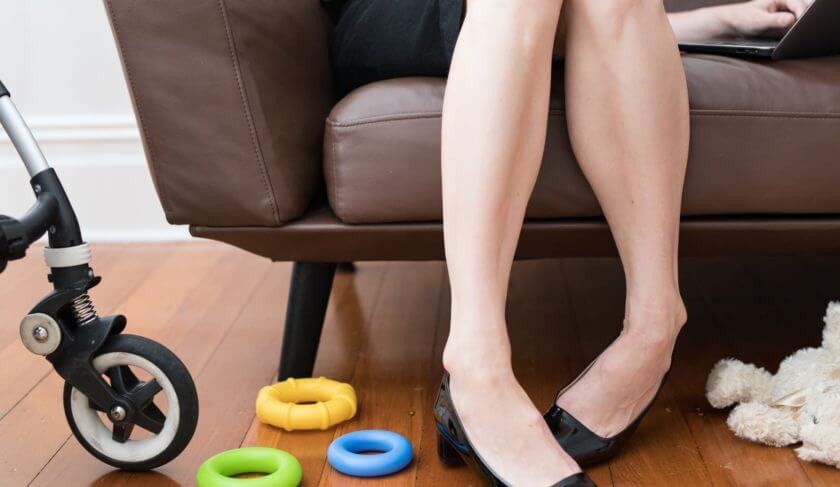
If you’re a parent, you know finding child care can be a challenge. Unfortunately, things stand to get more difficult as our nation approaches what’s being called the “child care cliff;” a loss of federal funding that will happen at the end of the month. It’s something that will not only have parents scrambling, but also could have ripple effects on the economy to the tune of $10.6 billion.
What Is The Child Care Cliff?
What is the child care cliff exactly? Here’s the short version: In 2021, as part of the American Rescue Plan Act, the federal government allocated $24 billion to the “Child Care Stabilization Act.” This funding was a lifeline to child care providers, allowing them to pay employees more, improve quality of care and ultimately, keep their doors open. At the end of this month, those funds are set to expire. If action isn’t taken by federal lawmakers to extend funding, the consequences are expected to be both dire and far-reaching.
MORE MONEY TIPS TO HELP YOU NAVIGATE LIFE: Subscribe to HerMoney today for free!
How Will The Child Care Cliff Impact Families?
The Century Foundation, a progressive, independent think tank, recently did an in depth analysis of what the end of Child Care Stabilization Act funding could mean for families, as well as the overall economy. The Foundation says that should the funds not be extended, more than 70,000 child care programs will likely close and more than three million children could lose care.
The Century Foundation anticipates there are six states that could be hit the hardest, with the number of licensed programs being cut by half or more. These include Arkansas, Montana, Utah, Virginia, West Virginia and Washington. In fourteen other states, they say the supply of licensed programs could be reduced by one-third.
The anticipated closure of child care centers could leave millions of families scrambling and in many cases, changing the way they work. According to Laura Valle-Gutierrez, a fellow with the Century Foundation who worked on its report, things like flexible schedules, remote work and state policies (for example, paid family medical leave) can help parents get by in the meantime. However, they aren’t long-term solutions. “Unfortunately with child care providers ultimately closing down, families are going to have to figure out what works best for them and make some hard decisions,” says Valle-Gutierrez.
How Will The Child Care Cliff Impact The Economy?
Those “hard decisions” will likely mean many parents leaving the workforce or reducing their hours. The Century Foundation projects the child care cliff will cost families $9 billion annually in lost earnings. While the study was able to quantify expected lost wages, Valle-Gutierrez says there are long-term costs they weren’t able to account for–especially for women. Studies show that when child care options go away, it’s disproportionately mothers who take on the responsibility. “It has material costs for them, but then there’s also the longer term costs,” she says. “Lost retirement, maybe lost health insurance and also just losing out on opportunities for advancement.”
Overall, the Century Foundation predicts the child care cliff will result in $10.6 billion in lost economic activity per year. It will also mean the likely loss of 200,000 child care jobs, due to the fact that many providers won’t be able to continue to pay higher wages to their employees. “We have this broken model where parents can’t afford to pay more…and then workers are able to go to a different job that will pay more and is probably a little bit stressful or challenging,” says Valle-Gutierrez.
Testifying in front of the Senate last week, labor economist and economic policy consultant Kathryn Anne Edwards voiced concerns about reducing the number of people working. “We are in a very tenuous moment for the economy,” she tells HerMoney. “We have so far staved off a recession, mainly because we have increased supply, instead of just cutting demand. This is really putting your thumb on the scale in favor of recession.”
A Broken System
To economists like Edwards, the impacts of the child care cliff aren’t all that surprising. “The problem that the government created for itself was that it intervened in a failing market that was in crisis,” she says. “The crisis is over, the failure is not…that is the cliff.”
Edwards says some would describe the child care market as a “textbook” market failure. To begin with, the supply falls short of the demand – there simply aren’t enough spots for the number of people seeking paid care for their children. “We know this from evidence of how many people don’t work because they can’t find sufficient care,” she says. “Anyone will tell you, when it came to childcare for their children from ages 0-5, they did not have a lot of options…that’s one market failure.”
The second market failure, Edwards says, is not only is child care insufficiently supplied, it’s also incredibly expensive. “Child care prices have risen much faster than prices overall, even faster than prescription drugs,” she says, adding that a recent Care.com study reported spending 27% of their income on child care. “That is an incredible burden.”
What Is The Solution To The Child Care Cliff?
What can be done to stave off the child care cliff? For starters, legislation has been introduced to provide $16 billion in child care support each year, for the next five years. This, experts say, wouldn’t solve the problem, but instead act as a bandaid that would prop the market up for the time being.
According to the Century Foundation, the key to a long-term solution will be substantial investments that help build up the supply of providers and ensure those providers are able to pay their employers more. “It’s sort of that two-pronged approach of meeting this immediate crisis and then making sure that in the long run we are actually setting ourselves up to build up that sector so we’re not in a similar situation in the future.”
The Bottom Line
If you’re a parent, you’re probably wondering, “what can I do?” The unfortunate answer is, not much. Ultimately, it will be up to the federal government to react and provide both long and short-term solutions.
However, Edwards–a mom herself who gets just how frustrating things are–says there is one thing parents should do. “I think it’s important to stress to families that there is no amount of effort that you can put forward that can fix a market failure,” she says. “It is on your government to either decide that market doesn’t matter enough to be saved…or to intervene. That can make you feel all kinds of things about yourself but there’s no effort that you can put in to solve this.”
READ MORE:
- How to Ask For A Longer Parental Leave — And Get It
- How to Save Money On Groceries
- Making Your Work Schedule Work With A New Baby
MORE MONEY TIPS TO HELP YOU NAVIGATE LIFE: Subscribe to HerMoney today for free!







